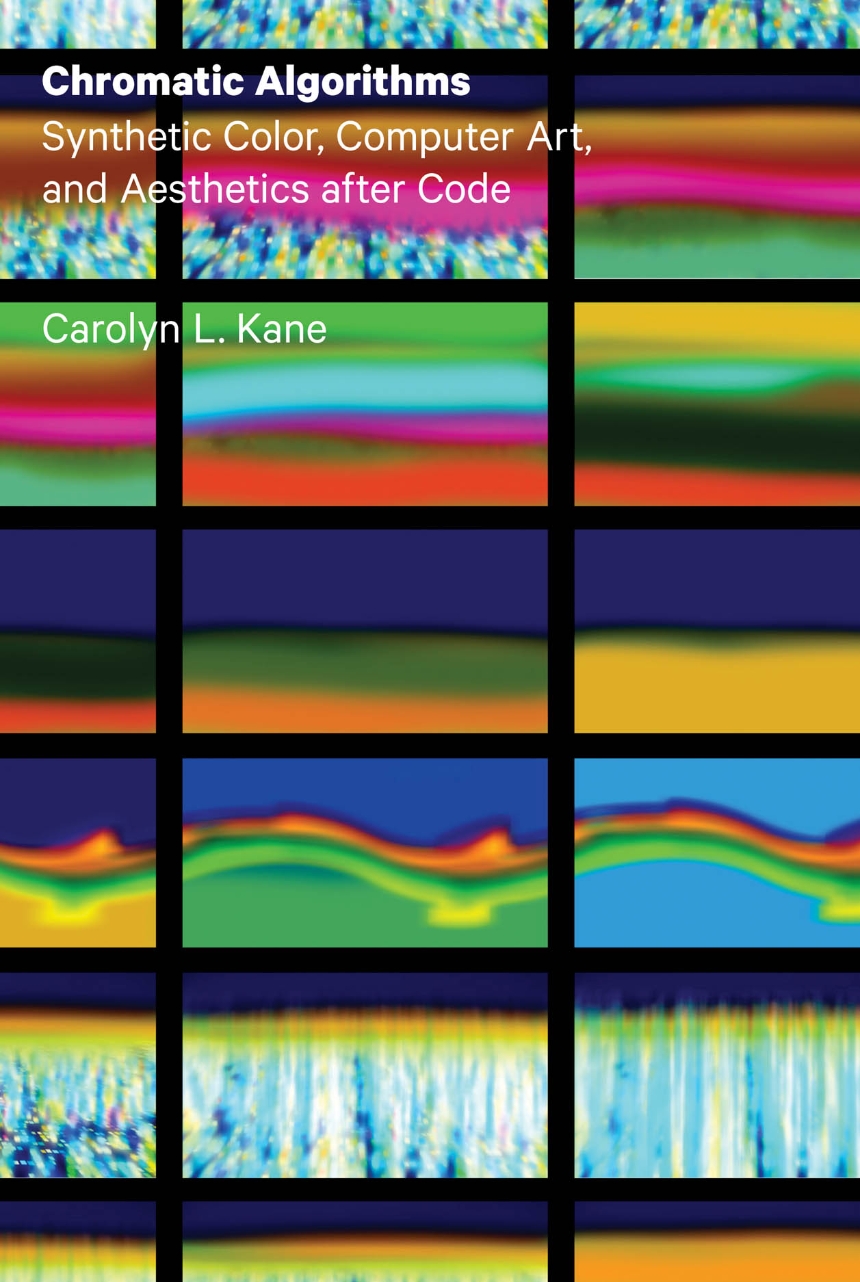Chromatic Algorithms
Synthetic Color, Computer Art, and Aesthetics after Code
Publication supported by the Neil Harris Endowment Fund
Chromatic Algorithms reveals the fascinating history behind digital color, tracing it from the work of a few brilliant computer scientists and experimentally minded artists in the late 1960s and early ‘70s through to its appearance in commercial software in the early 1990s. Mixing philosophy of technology, aesthetics, and media analysis, Carolyn Kane shows how revolutionary the earliest computer-generated colors were—built with the massive postwar number-crunching machines, these first examples of “computer art” were so fantastic that artists and computer scientists regarded them as psychedelic, even revolutionary, harbingers of a better future for humans and machines. But, Kane shows, the explosive growth of personal computing and its accompanying need for off-the-shelf software led to standardization and the gradual closing of the experimental field in which computer artists had thrived.
Even so, the gap between the bright, bold presence of color onscreen and the increasing abstraction of its underlying code continues to lure artists and designers from a wide range of fields, and Kane draws on their work to pose fascinating questions about the relationships among art, code, science, and media in the twenty-first century.
328 pages | 114 color plates, 15 halftones, 3 line drawings, 1 table | 7 x 10 | © 2014
Art: Art Criticism
History: History of Technology
Reviews
Table of Contents
Part 1. Chromatic Visions (400 B.C.-1969)
Colors Sacred and Synthetic
Classical and Modern Color: Plato through Goethe
Industrial Color: Synthetics through Day-Glo Psychedelics
Synthetic Color in Video Synthesis
Part 2. Disciplining Color: Encounters with Number and Code (1965-1984)
Informatic Color and Aesthetic Transformation in Early Computer Art
Collaborative Computer Art and Experimental Color Systems
From Chromakey to the Alpha Channel
Part 3. “Transparent” Screens for Opaque Ontology (1984-2007)
Digital Infared as Algorithmic Lifeworld
The Photoshop Cinema
Postscript. A New Dark Age
Acknowledgements
Notes
Bibliography
Index
